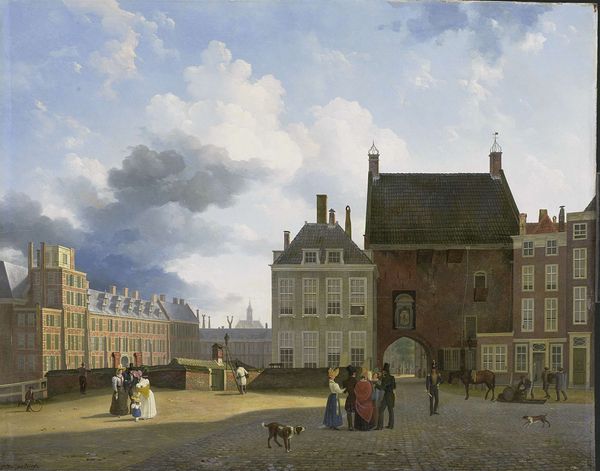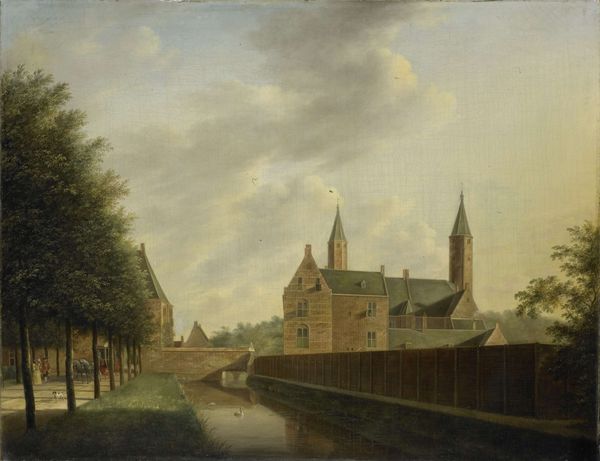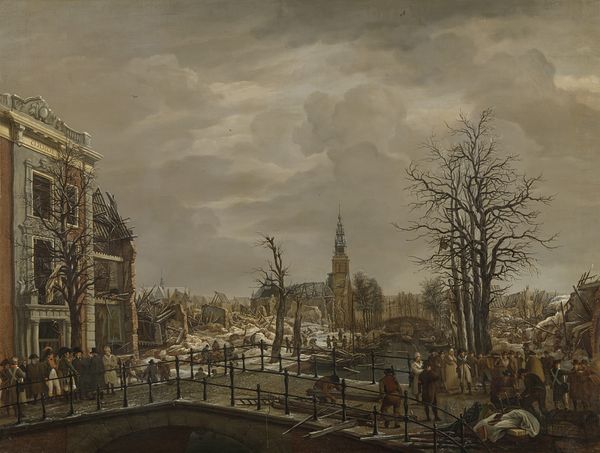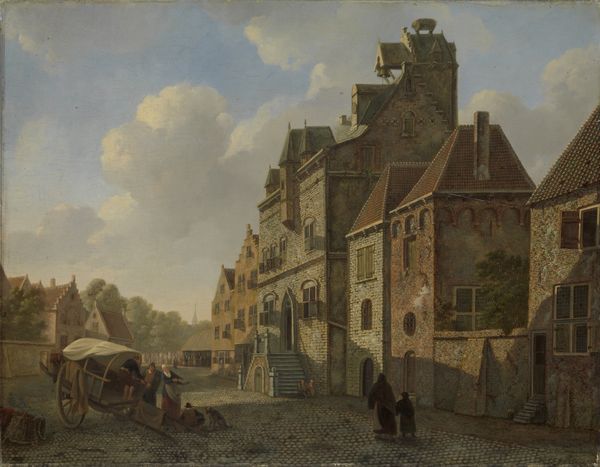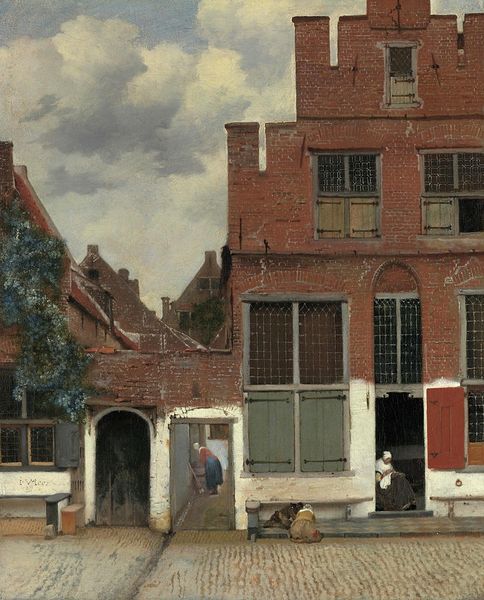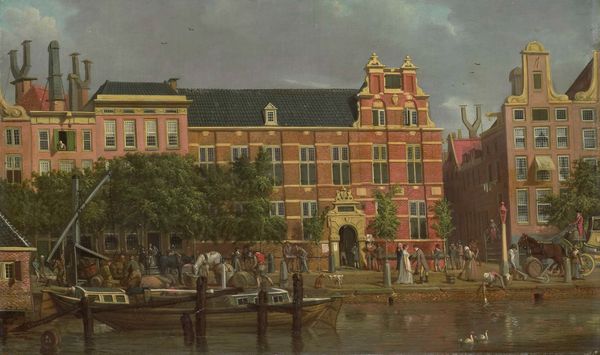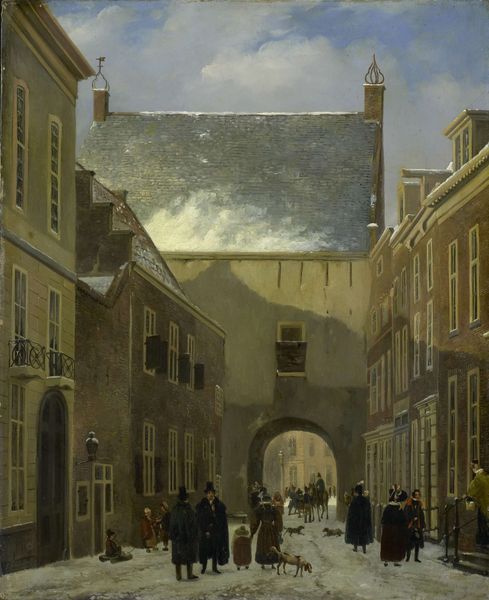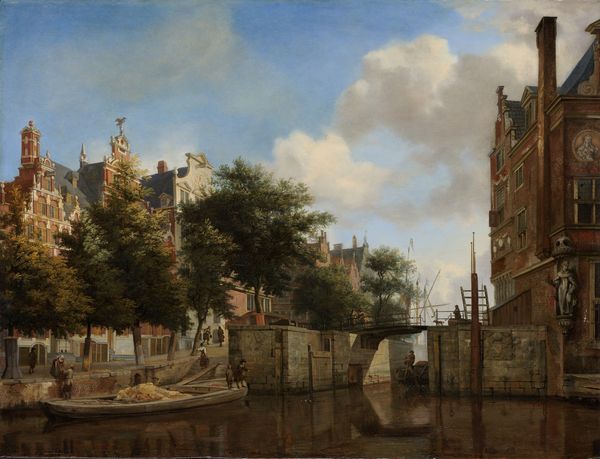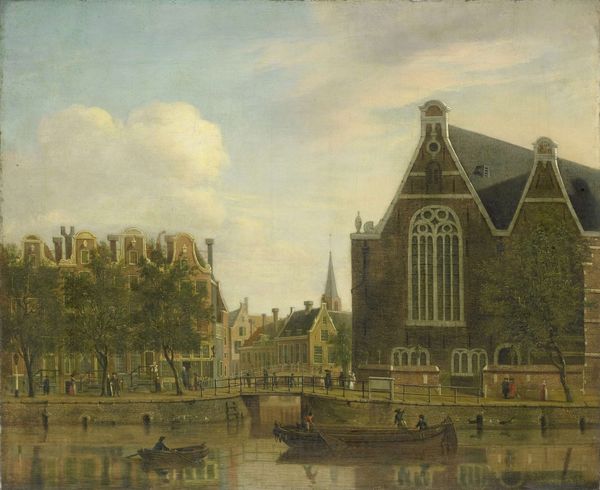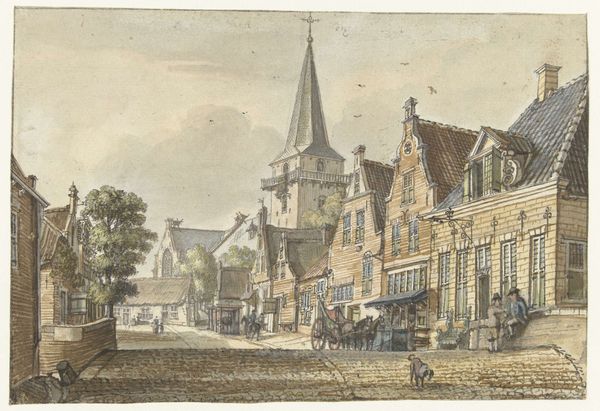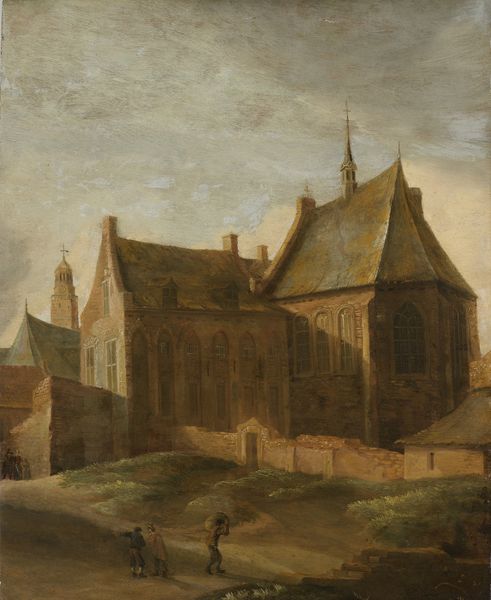
painting, oil-paint
#
neoclacissism
#
painting
#
oil-paint
#
landscape
#
cityscape
#
genre-painting
#
academic-art
#
realism
Dimensions: height 62 cm, width 72 cm, depth 8 cm
Copyright: Rijks Museum: Open Domain
Bartholomeus Johannes van Hove painted The Mauritshuis in The Hague with oil on panel. The architecture in the painting reflects a profound connection with classical antiquity. Note the symmetrical façade, the triangular pediment adorned with sculptures, and the use of Corinthian columns. These elements, deeply rooted in Greco-Roman architecture, speak of order, reason, and a harkening back to a golden age. The classical language of architecture becomes a symbol of cultural aspiration and historical continuity. Consider the triumphal arch, borrowed from Roman architecture and signaling power. It is visible in other contexts, such as the arches erected by emperors to commemorate military victories. The Mauritshuis, therefore, becomes more than a building; it stands as a cultural symbol, linking the present with the classical past. These forms speak to a collective memory and an attempt to tap into the glory of antiquity. It’s a narrative frozen in stone, perpetually inviting us to partake in its silent saga.
Comments
No comments
Be the first to comment and join the conversation on the ultimate creative platform.
